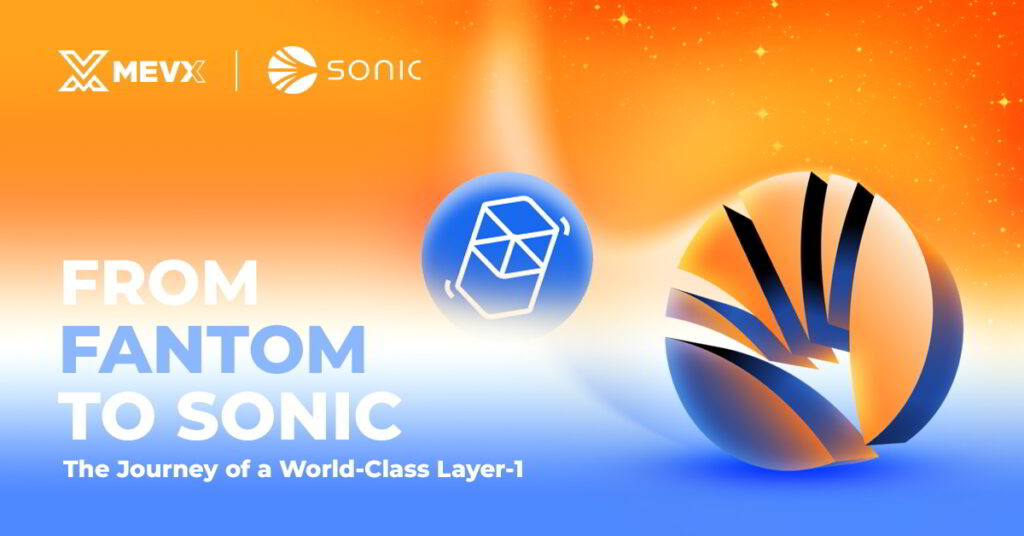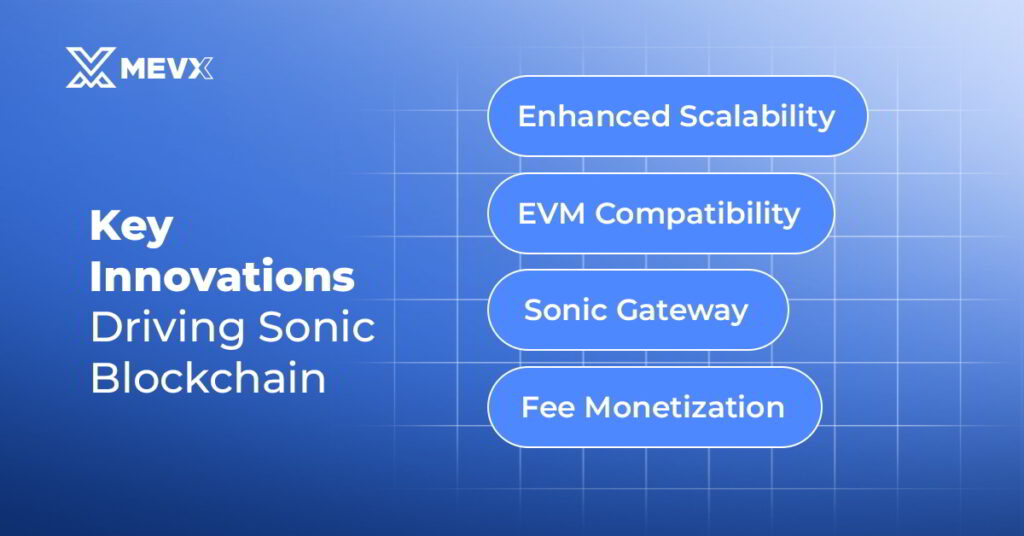Sonic, a high-speed Layer-1 blockchain, emerges as a bold reimagination of Fantom. Far from a simple upgrade, Sonic was designed to meet the demands of a maturing Web3 landscape. This article traces the journey from Fantom to Sonic, unpacking the innovations that define Sonic blockchain and its path to reshaping decentralized finance (DeFi), NFTs, and GameFi.

The Fantom Foundation: Setting the Stage
- Fantom, launched in 2018, was a pioneer in addressing blockchain’s scalability trilemma, balancing speed, security, and decentralization. Its DAG-based (Directed Acyclic Graph) consensus and Lachesis protocol enabled sub-second transaction finality and thousands of transactions per second (TPS), earning it a strong foothold in DeFi.
- By 2021, Fantom’s ecosystem boasted over $10 billion in total value locked (TVL), with projects like SpookySwap and Curve thriving on its low-fee, high-throughput network.
- As the blockchain space evolved, Fantom’s team recognized limitations. Scaling to meet global demand, integrating with Ethereum’s vast ecosystem, and incentivizing developers required more than incremental tweaks. Enter Sonic: not a replacement for Fantom, but a bold evolution born from its DNA.
Why From Fantom to Sonic?
The transition to Sonic blockchain wasn’t just cosmetic, it was a strategic leap. Here’s why the shift happened:
Technological Overhaul
- Fantom’s architecture, while advanced, couldn’t support the next level of scalability without a redesign.
- Sonic’s upgraded DAG and Asynchronous Byzantine Fault Tolerance (aBFT) push performance to 10,000 TPS and 720ms finality.
Economic Reinvention
- Fantom’s tokenomics needed refinement to sustain long-term growth.
- Sonic blockchain introduced a fixed 3.175 billion token supply and fee-burning mechanisms to curb inflation.
Developer Focus
- Fantom lacked a robust model to reward DApp creators.
- Sonic’s Fee Monetization (FeeM) program, sharing up to 90% of transaction fees, fills this gap.
Market Positioning
- The rebrand clarified Sonic’s identity as a DeFi and GameFi leader, distancing it from Fantom’s broader, sometimes vague ambitions.
This pivot, announced in mid-2024, marked Sonic as a purpose-built platform for the future.
Key Innovations Driving Sonic Blockchain
Sonic blockchain builds on Fantom’s strengths while introducing transformative features:

- Enhanced Scalability: Sonic’s DAG-aBFT hybrid processes transactions concurrently, achieving 10,000 TPS, rivaling Solana while maintaining decentralization.
- EVM Compatibility: Full Ethereum Virtual Machine (EVM) support lets developers port Solidity-based DApps effortlessly, tapping into Ethereum’s $50 billion+ DeFi market.
- Sonic Gateway: A decentralized bridge enables 10-minute asset transfers to Ethereum, with plans to connect to Solana and Avalanche.
- Fee Monetization: Developers earn from DApp usage, fostering innovation in DeFi, NFTs, and GameFi.
These advancements make Sonic not just faster but smarter, aligning technology with economic incentives.
Tokenomics and Community Engagement
Sonic’s token, S, is central to its economy:
- Fixed Supply: 3.175 billion tokens ensure predictability.
- Fee Burning: A portion of transaction fees is burned, countering inflation.
- Staking and Governance: S token holders secure the network and vote on proposals.
To kickstart adoption, Sonic blockchain launched a 200-million-token airdrop, targeting Fantom’s community and new users. This move, coupled with low gas fees (cents per transaction), has drawn thousands to Sonic’s DeFi pools and NFT marketplaces, building momentum for its ecosystem.
The Role of Andre Cronje
No discussion of Sonic blockchain is complete without Andre Cronje, DeFi’s enigmatic architect. Known for Yearn.Finance, Cronje’s involvement lent Fantom credibility and drove its early success.
With Sonic, his vision is clearer: a blockchain where speed empowers users, low fees democratize access, and developers are rewarded.
Cronje’s hands-on approach, coding, strategizing, and engaging the community, has shaped Sonic into a developer’s dream, with features like FeeM reflecting his belief in sustainable ecosystems.
Conclusion
From Fantom to Sonic’s bold reinvention, Layer-1’s journey reflects the blockchain industry’s relentless drive for progress. With 10,000 TPS, EVM compatibility, and developer-centric economics, Sonic blockchain isn’t just iterating, it’s redefining what a Layer-1 can be. For those watching Web3’s evolution, Sonic’s story is one of transformation, proving that even the best can become better.
Share on Social Media:
